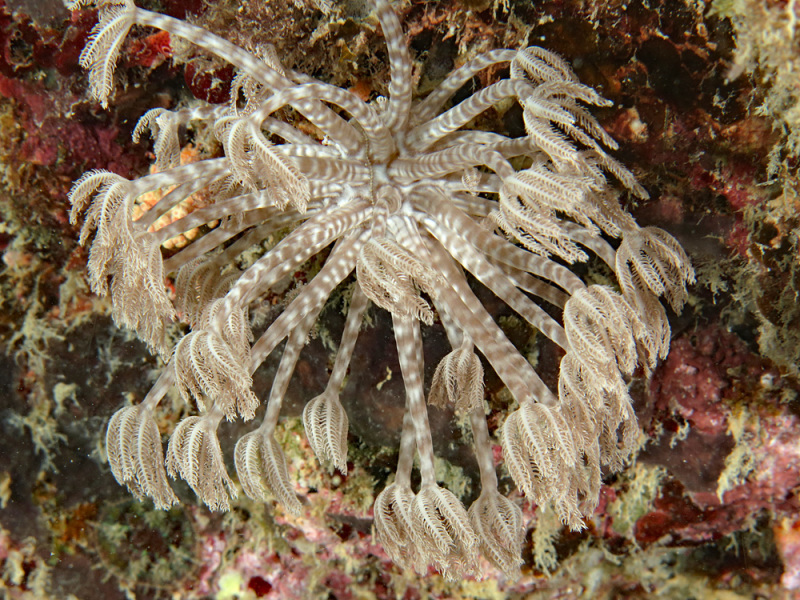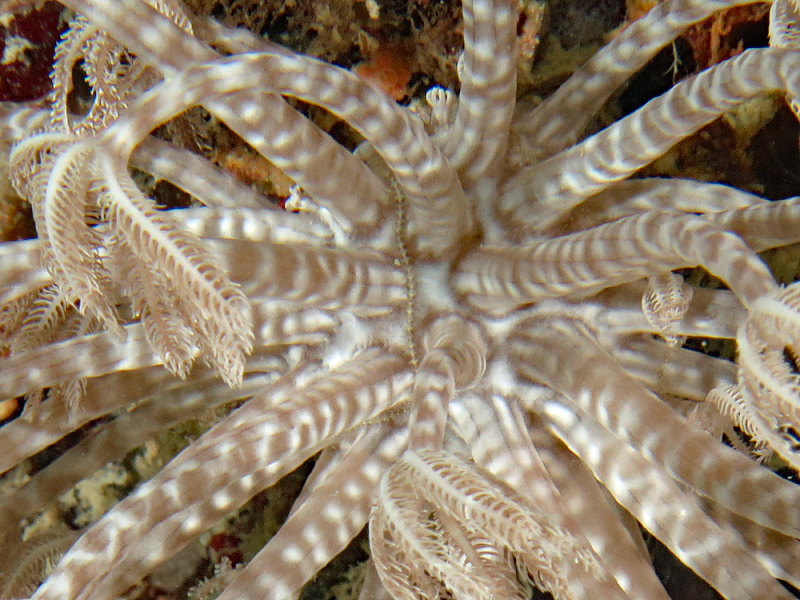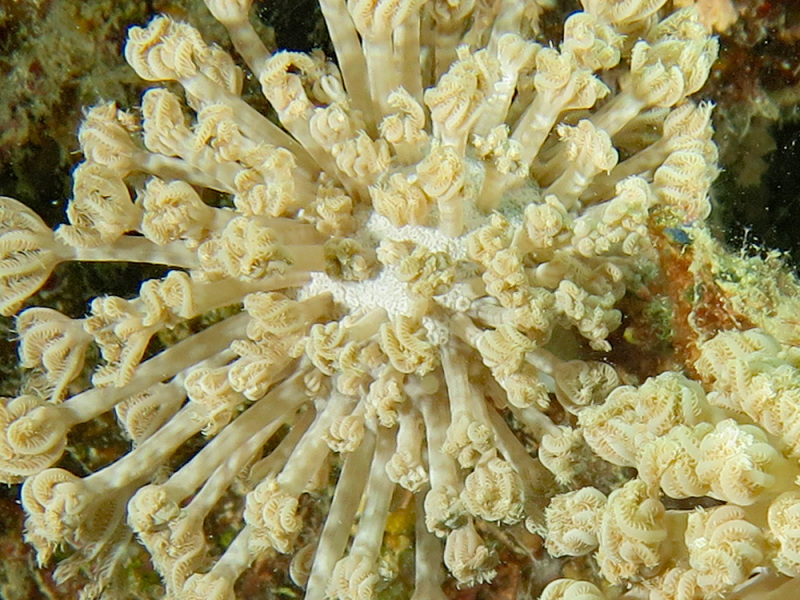
©Anne Hoggett: Heteroxenia sp. (individual A) on a vertical surface at North Point Lizard Island. Tentacles pulsating.

©Anne Hoggett: Heteroxenia sp. (individual A) on a vertical surface at North Point Lizard Island. Small polyps (siphonozooids) cover the surface of the "body", between the large polyps (autozooids).

©Anne Hoggett: Heteroxenia sp. (individual B) on a vertical surface at North Point Lizard Island. Small polyps (siphonozooids) cover the surface of the "body", between the large polyps (autozooids).
Colours
Distinguishing features
Colonies consist of small mounds up to 7 cm diameter with distinct large polyps (autozooids) on long stalks, which may or may not pulsate. In mature colonies, a second set of polyps (siphonozooids) covers the colony surface between the bases of the longer pinnules. These are small with very short tentacles and do not extend far beyond the surface of the colony.
Colonies are usually white, cream, or pale brown. Sclerites within the long autozooid bodies may be concentrated to give the appearance of bands.
There are 11 or 12 accepted species of Heteroxenia worldwide (World Register of Marine Species accessed 4 Apr 2021) but the species diversity within Australia appears to be unknown (no Australian Heteroxenia reliably identified to species listed in Atlas of Living Australia, 4 April 2021).
Size
- Size data has not been obtained.
Synonyms
Similar taxa
-
Animalia:
species: Xenia sp.
does not have siphonozooids at all, but neither do immature colonies of Heteroxenia. It appears impossible to distinguish immature Heteroxenia from Xenia in the field.
Distribution
Distribution and habitat preferences
Shallow lagoons and sheltered back reef environments.
Can be found in most reef habitats around Lizard Island.
Behaviour
Heteroxenia sp(p). are known to have high concentrations of toxic organic compounds, which deter predators and also inhibit settlement and competition from other benthic organisms. The Xeniid corals brood their planula larvae internally, and release larvae over many months of the year, in contrast to the alcyoniid soft corals which are synchronised broadcast spawners.
Web resources
References
References that assist with identification
- Fabricius, K. and P. Alderslade (2001). in: Soft corals and sea fans: a comprehensive guide to the tropical shallow water genera of the central-west Pacific, the Indian Ocean and the Red Sea. Australian Institute of Marine Science, Townsville.
Other references
- Alino, P.M. and J.C. Coll (1989). Observations of the synchronized mass spawning and post settlement activity of octocorals on the Great Barrier Reef, Australia: biological aspects, Bulletin of Marine Science, 45(3): 697-707.
- Fabricius, K.E. (1997). Soft coral abundance on the central Great Barrier Reef: effects of Acanthaster planci, space availability, and aspects of the physical environment, Coral Reefs, 16(3): 159-167.
- View all references
